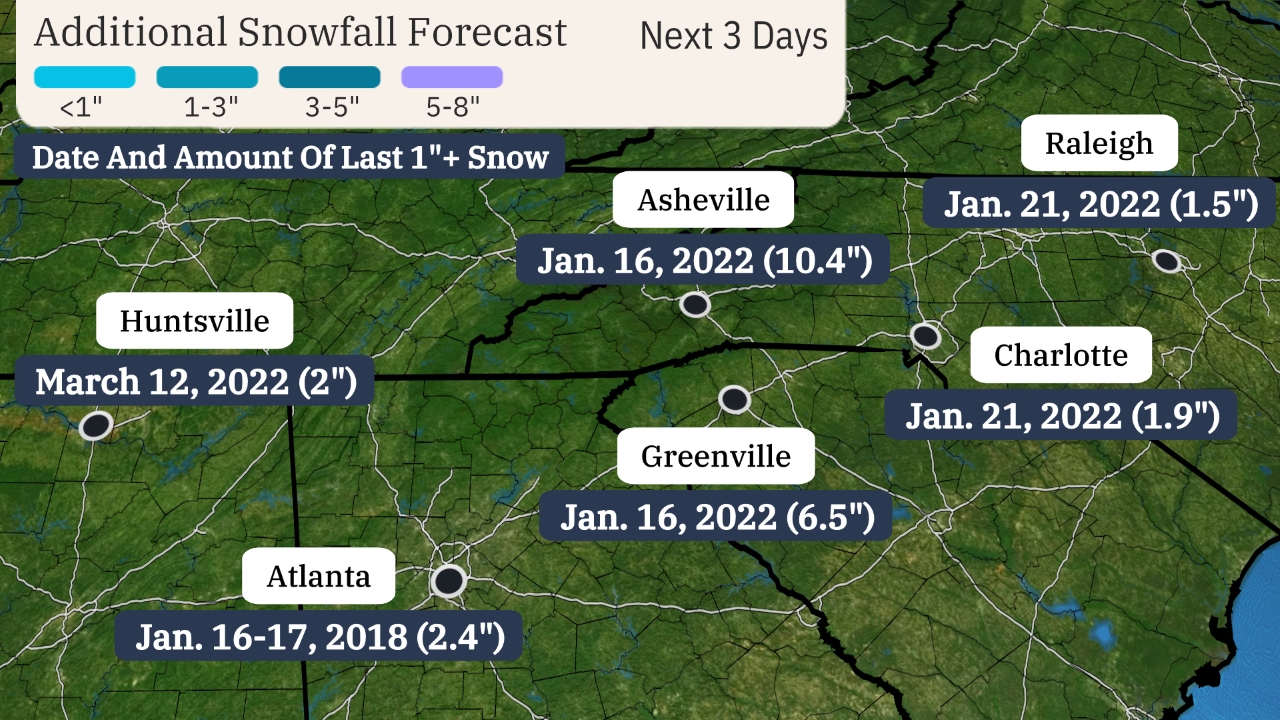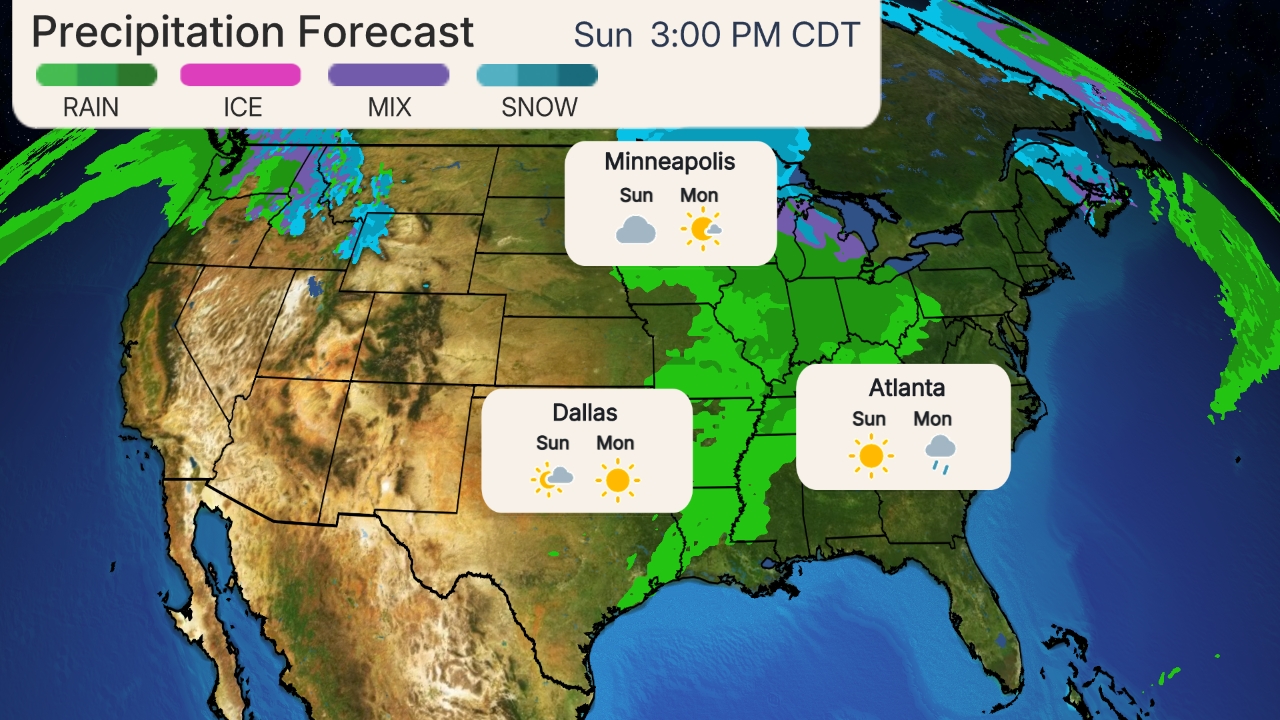Jonathan Erdman
A prolonged, historic arctic cold outbreak in parts of the South is being replaced by a much-needed warmup to those shivering and without power in Texas, Oklahoma and other parts of the Plains.
The double whammy of record-smashing cold and one of the heaviest snowstorms parts of the South have seen in decades has taken its toll.
Blackouts left millions of homes and businesses without electricity, some even without running water.
And then another winter storm, named Viola by The Weather Channel, dumped more snow and ice in the region.
Yes, there is a warmup on the horizon for the shivering South.
Temperature Changes Ahead
We have a full rundown of all the notable cold records that were shattered in this historic outbreak in the recap section at the bottom of this article, including an all-time record low tied Tuesday morning in Hastings, Nebraska, of minus 30 degrees; subzero cold into Texas; and the coldest morning in Oklahoma City since 1899.
The cold will continue to wither in the days ahead, but it will be a slow transition.
One reason is the most widespread snowpack in the Lower 48 States since at least 2003 helping to refrigerate the air.
Additional wintry precipitation from Winter Storm Viola only added to this snow and ice cover.
While forecast lows the next several days won't be as off-the-charts as we've already seen, they will still be chilly.

Now, let's look at daytime highs for the next several days. We can break this down by region in the hardest-hit areas:
-Interstate 10 corridor (San Antonio, Houston, Lake Charles): Temperatures climbed into the 50s and 60s on Saturday and are expected to rise into the 70s on Sunday.
-Interstate 20 corridor (Abilene, Dallas, Shreveport): Temperatures were in the 40s and 50s on Saturday and will reach the 50s on Sunday.
-North of I-20 (Oklahoma, Kansas, Arkansas): Highs will rise into the 40s this weekend, then 50s, perhaps lows 60s by Tuesday.
So, while allowing some melting during the day, these high temperatures will remain colder than average for many areas through Sunday, and certainly chilly enough to require at least some power to heat your home, condominium or apartment.
SPONSORED: Epic winter clearance sale at Sierra Trading Post

Short-Lived Warmup
Unfortunately, this warmup may not last long.
Mid-to-late week, we expect colder air to return to the Plains, as you can see in the latest medium-range temperature outlook below.
However, this colder air will be nothing remotely close to the record-shattering cold from this week.
(MAPS: 10-Day U.S. Forecast Highs and Lows)

Historic Cold Outbreak Recap
Tuesday, Feb. 16
-Dallas-Fort Worth dropped to minus 2 degrees. That's the coldest temperature there since it hit minus 2 in 1949. It's only 6 degrees shy of the all-time record low of minus 8 set in 1899.
-Oklahoma City recorded its second-coldest temperature on record with a low of minus 14. Only a minus-17-degree reading in 1899 is colder in the city's weather records.
-Lawton, Oklahoma, set a new all-time record low of minus 12. Records in the city date back to 1912.
-Fayetteville, Arkansas, set a new all-time record low of minus 20. Records there date to 1905.
-Little Rock, Arkansas, plunged to minus 1 degree, its first subzero low since Christmas Eve 1989.
-Tyler, Texas, plunged to minus 6 degrees, setting a new all-time record low.
-Tulsa, Oklahoma, dropped to minus 13. That matches the coldest reading there since it hit that mark in 1918.
-Shreveport, Louisiana, had its coldest morning since 1930 with a low of 1.
-Alexandria, Louisiana, had its coldest morning since 1962, plunging to 11 degrees.
-New Orleans recorded its coldest February daily high temperature on record, only reaching 33 degrees. It was also their coldest Mardi Gras day on record, previously 38 degrees on Feb. 14, 1899.
-Hastings, Nebraska, tied its all-time record low of minus 30. Three other Nebraska reporting stations set new all-time record lows as well.
Monday, Feb. 15
-San Angelo, Texas, tied its second-coldest all-time record low on Monday morning after dipping to minus 1.
-Houston fell to 16, the coldest temperature there since December 1989. Tuesday morning was colder, at 13 degrees.
-Kansas City International Airport reported a wind chill of minus 32 on Monday morning. That's the lowest wind chill there since Dec. 23, 1989, according to the National Weather Service.
The longevity of this cold snap has also been impressive.
Billings, Montana, finally rose above zero Monday morning for the first time in a week, their longest continuous subzero streak since 1983.
Monday was the 10th day in a row Fargo, North Dakota, didn't rise above zero, their longest such streak since 1996.
The Weather Company’s primary journalistic mission is to report on breaking weather news, the environment and the importance of science to our lives. This story does not necessarily represent the position of our parent company, IBM.
The Weather Company’s primary journalistic mission is to report on breaking weather news, the environment and the importance of science to our lives. This story does not necessarily represent the position of our parent company, IBM.

No comments:
Post a Comment